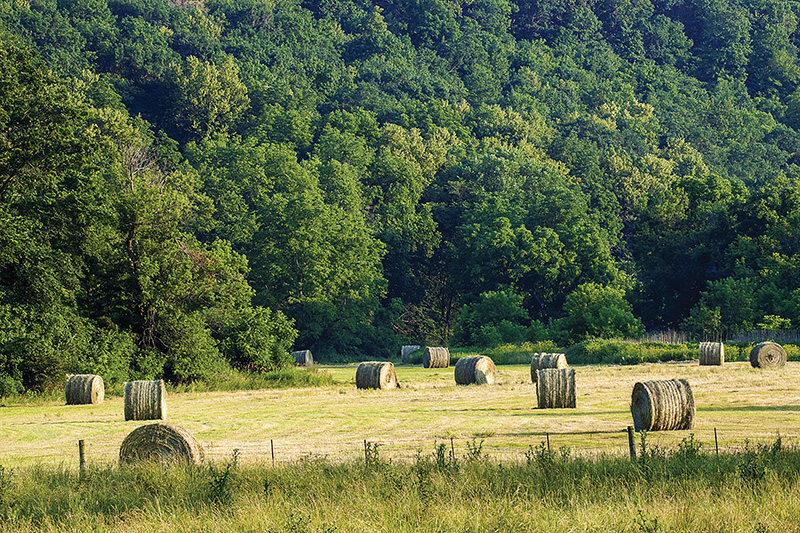By Ashley Knapton – B. Sc (Agr), CCA-ON
AgriNews Contributor
The majority of 1st cut hay is off and put away – what a great feeling that is! Generally, local reports are that most people are very happy with the yields, and I am hopeful that that happiness will continue when we start to get our feed analyses back. But it is not time for us to walk away from our alfalfa fields until the 2nd cut rolls around. There are a few things we need to monitor in the coming days and weeks: Alfalfa Weevil – Areas that had a high population of alfalfa weevil before first cut will likely still have some pressure after 1st cut. Fields that were cut early or had large populations should be monitored for feeding on regrowth, as these larvae can defoliate large areas of leaves. Alfalfa weevil generally have only one generation so when this current generation passes, we should be in the clear for this pest. It is unusual to be dealing with weevil in 2nd cut but with such an early first cut, the lifecycle timing of these weevils is mismatched from our hay.
Potato Leafhopper – There have been rumblings of growing numbers in a couple areas across the province and that means we should be on the ready. The weather for the next few weeks will likely influence the future of these populations and the time to scout is now. Potato leafhopper is a major pest in alfalfa, with its ability to inflict upwards of 50 per cent yield reduction as well as serious impacts on quality, particularly protein content which matters for dairy producers. Leafhoppers are unlike weevil in that they don’t overwinter in Canada but rather they are carried in from the Gulf Coast on wind patterns every year, making it hard to predict what populations are going to be. From egg hatch to adult is only approximately two weeks of growth, meaning that populations can increase very quickly. Leafhoppers pierce the plant and suck out the phloem, impacting the plant’s ability to move nutrients within itself. The impact on alfalfa is stunted growth, impacting yield and visible “hopperburn” damage – yellowing V shaped discolouration of leaf tips. An important thing to note is that once you see the distinct leafhopper burn, you have already faced economic damage.
Scouting for leafhopper is something that needs to be done every 5-7 days after 1st cut. Because these pests can have multiple generations, scouting will need to occur until a killing frost. Scouting is best done with a sweep net to get accurate numbers, but a ball cap can be used to quickly see if leafhoppers are in the field. A particular focus should be placed on new seedings as these fields sometimes don’t show the impacts on their height. Leafhoppers are small, about 1/8” and a bright, light green colour. When caught in a net, they are distinctive for their hopping behaviour – hence the name! Leafhoppers can be easily confused with pea aphids. Leafhoppers are differentiated through their long narrow body and fewer legs.
Drought Impacts – Lastly, it’ll be important to consider rainfall in advance of the 2nd cut. If you are in an area of severe drought, this will have an impact on the plant’s ability to handle stress as well as harvest timing of our future cuts. Alfalfa is incredibly drought tolerant, so risk of stand loss is not a top concern. Alfalfa has an impressive tap root structure that allows it to draw up deep moisture, as well as an ability to go dormant when needed to conserve moisture. But, in cases of long-term drought, this dormancy can delay the next cutting.
Monitoring our fields has always been an important tool to make sure we are aware of challenges in the field to avoid big surprises in a few weeks time when we get ready to do this all again. With feed costs, input costs and land prices as they are, it is good business to ensure we are maximizing every acre of forage in every way we can. Take the time now to scout your alfalfa fields and set you and your herd up for 2nd cut success.













